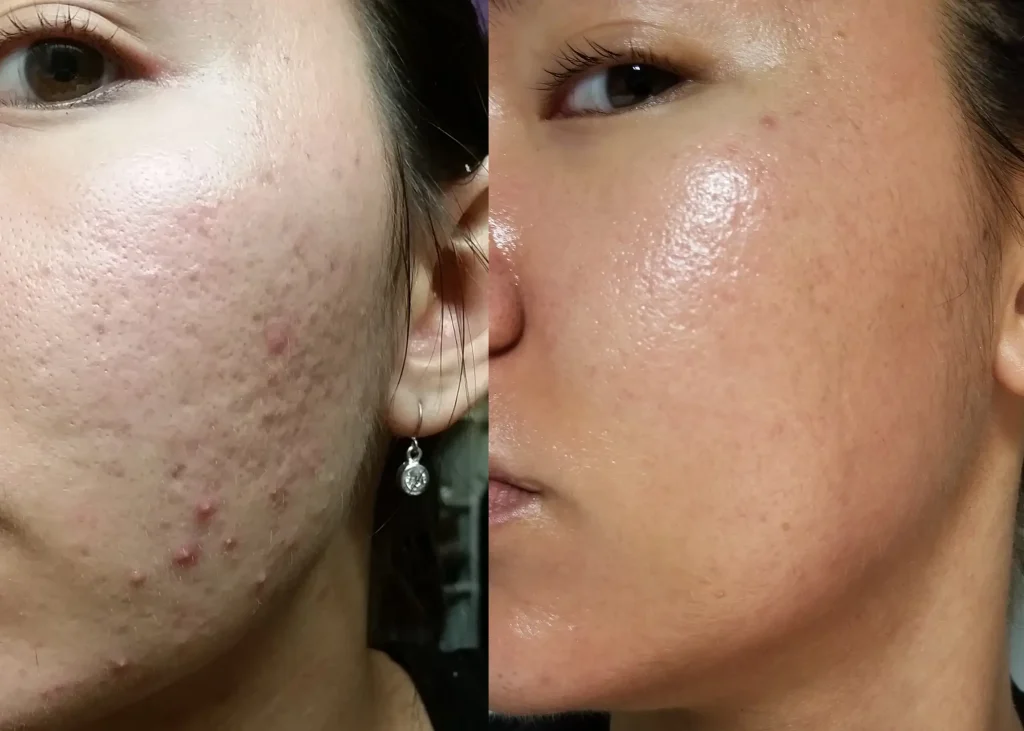Putting needles into your skin sounds like a procedure only a professional should handle. You may be thinking, why perform a microneedling at home then? Well, cost.
It’s safe to assume that each session will cost you anywhere from $200 to $700—a price that’s out of reach for many, especially when you need a follow-up appointment.
The best microneedling pens online, however, don’t only come in a fraction of the cost but also offer you ample convenience, too.
Home treatments rarely go deep enough to provide dramatic results (say your skin is more affected) but can promote exfoliation and product absorption. Individuals who are consistent with home treatments over a four to six month period can definitely see some improvements.

What Is Microneedling?
Microneedling is a minimally invasive treatment that pricks the skin with very thin, sterilized needles. This treatment is used to alleviate concerns such as texture, fine lines, wrinkles, and even stretch marks. Microneedling functions by creating micro-injuries on the skin through the use of a device that uses a rolling or stamping motion.
As far as in-office treatment, the potential microneedling benefits include:
- improvement of acne scars and discolouration
- reduction of wrinkles, fine lines, and stretch marks
- skin rejuvenation for texture and complexion
- enhancement of product absorption
- increased skin thickness
How Does Microneedling Work?
The tiny injuries created by the microneedling pens, or dermarollers, trigger your body’s natural healing response. When your body repairs the channels and injuries in the skin, it produces new collagen. If the holes are tiny enough, there won’t be any scars. With new collagen, your skin texture becomes smoother and firmer.
Having said that, things tend to differ slightly when it comes to using the best at-home microneedling pens. The needles on these pens don’t penetrate as deep as the microneedles used by a professional. Though they’re probably not deep enough to be stimulating collagen production, they can still aid with product penetration.
Is Microneedling At Home Safe?
Though a dermaroller won’t penetrate the skin as deeply as in-office microneedling treatment, it still poses some risks. Some individuals experienced complications such as mild bruising and scarring from attempting at-home microneedling.
Before you steer clear of this treatment, trust us, dermarollers are generally safe. This is because the needles are only 0.25mm in depth and won’t penetrate the skin as a professional treatment would. However, applying too much pressure, not sterilizing your device, or dermarolling on broken, inflamed skin or over severe acne can all pose risks like scarring or infection.
That gives you all the more reason to purchase a dermaroller that suits your skin and learn how to do microneedling at home the right way.
What to Look for When Buying a Dermaroller?
A foolproof way to purchase the perfect dermaroller for your skincare needs is to first, consult your esthetician or dermatologists. Listen to their recommendation on needle length and ask for a quick tutorial on how to use it.
Say you can’t speak to a medical professional, we recommend researching brands, reading reviews, and choosing the correct needle length. Don’t settle on a bargain price to save money, because you won’t always end up with a quality dermaroller.
To ensure you won’t break or tear the skin, stick with rollers with needles that are either 0.2mm, 0.25mm, or 0.3mm, and never more.
5 Steps to Do Microneedling At Home
1. Disinfect Your Microneedling Pen
Always start by disinfecting your derma roller, letting it soak in 70% isopropyl alcohol for approximately 5 to 10 minutes before you begin.
2. Cleanse Your Skin
Wash your face using a gentle pH-balanced cleanser, and rinse it off with lukewarm water. You’ll also want to gently wipe that 70% isopropyl alcohol directly on your face before you start rolling.
If you’re sensitive to pain, consider a numbing cream after washing your face. You’ll definitely want to apply one if you’ve advanced your treatment to using longer needles.
3. Start Rolling
Before you begin, mentally divide your face into four sections, stay away from your eye area completely:
- upper left
- upper right
- lower left
- lower right
Gently and firmly roll over one area in one direction (vertically or horizontally) about two to three times, and be sure to lift the roller before each roll.
Say you start vertically: After you’ve covered one section about two to three times this way, move the roller slightly and repeat until you’ve covered the entire section in that one direction. Then, go back and repeat the whole process in that section, but this time do it horizontally, utilizing a cross-hatch pattern.
4. Rinse Your Face
Rinse your face with clean water only when you’re done rolling and pat it dry with a clean pad.
5. Sanitize Your Dermaroller
First, wash the dermaroller using dishwasher soap. Then, soak it again in the 70% isopropyl alcohol for a good 10 minutes and put it back in its designated case.
Don’t wait for too long to replace your dermaroller, ever—you should replace your current roller with a fresh one after 10 to 15 uses, so that makes every month if you’re rolling several days a week.
How Often Should You Do Microneedling At Home?
The frequency of your treatments will have to depend on the length of your dermaroller’s needles and your skin’s sensitivity. If your needles are shorter, you can proceed to roll every other day, and if the needles are much longer, we urge you to space out treatments every three to four weeks.
If you’re really looking to amp up your results, you may want to consider incorporating additional skin care treatments between your microneedling sessions, like radio frequency.
Microneedling Before and After

A before-and-after picture of a microneedling user taken two years apart.
Bottom Line
Microneedling at home probably isn’t something most skin experts would endorse, but if you’re set on adding this procedure into your routine, proceed with caution and do your research.
The effectiveness of the treatments depends on the depth reached by the needle on your dermaroller.
Besides prioritizing safety, remember that these treatments require repetition. To yield significant results, you ought to be consistent. However, individual success will depend on a variety of factors and a whole lot of patience.
Once and for all, at-home microneedling pens don’t have the capability to procure as much change as in-office medical-grade devices. Remember, change takes time and the best results are seen after a series of treatments.

Celine So
Be mindful of your words as they are impactful, which also explains why I am so fond of writing.


